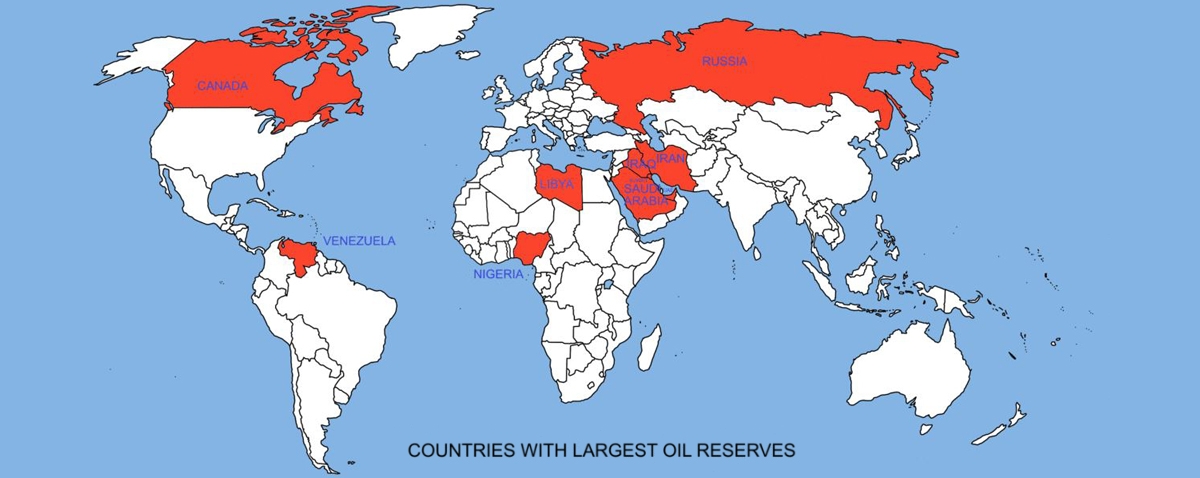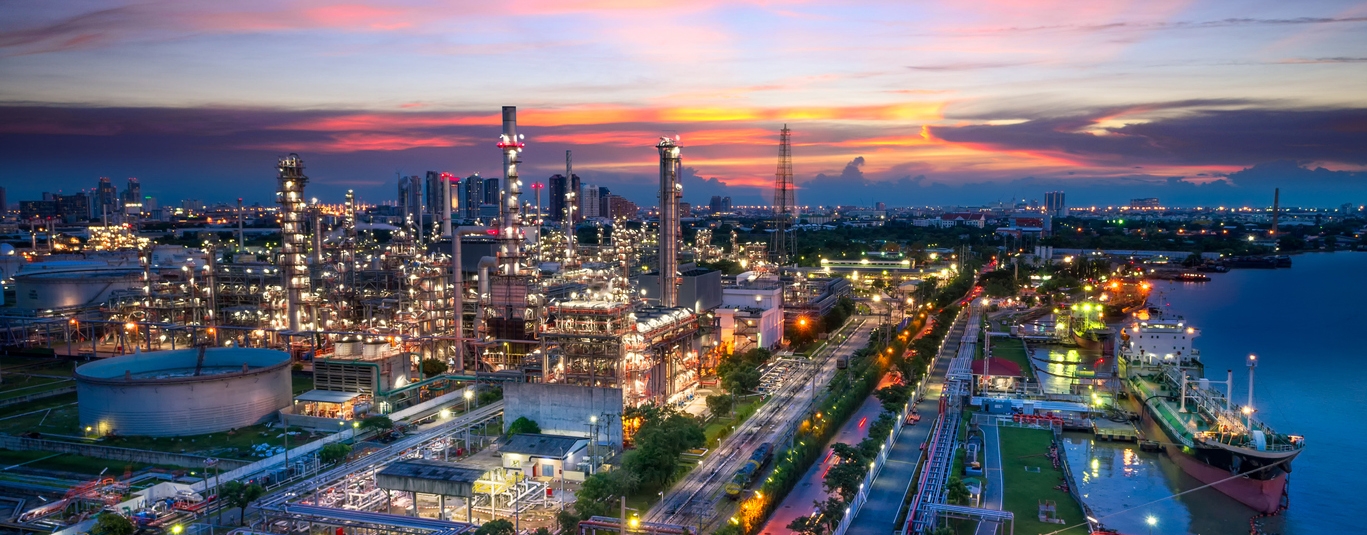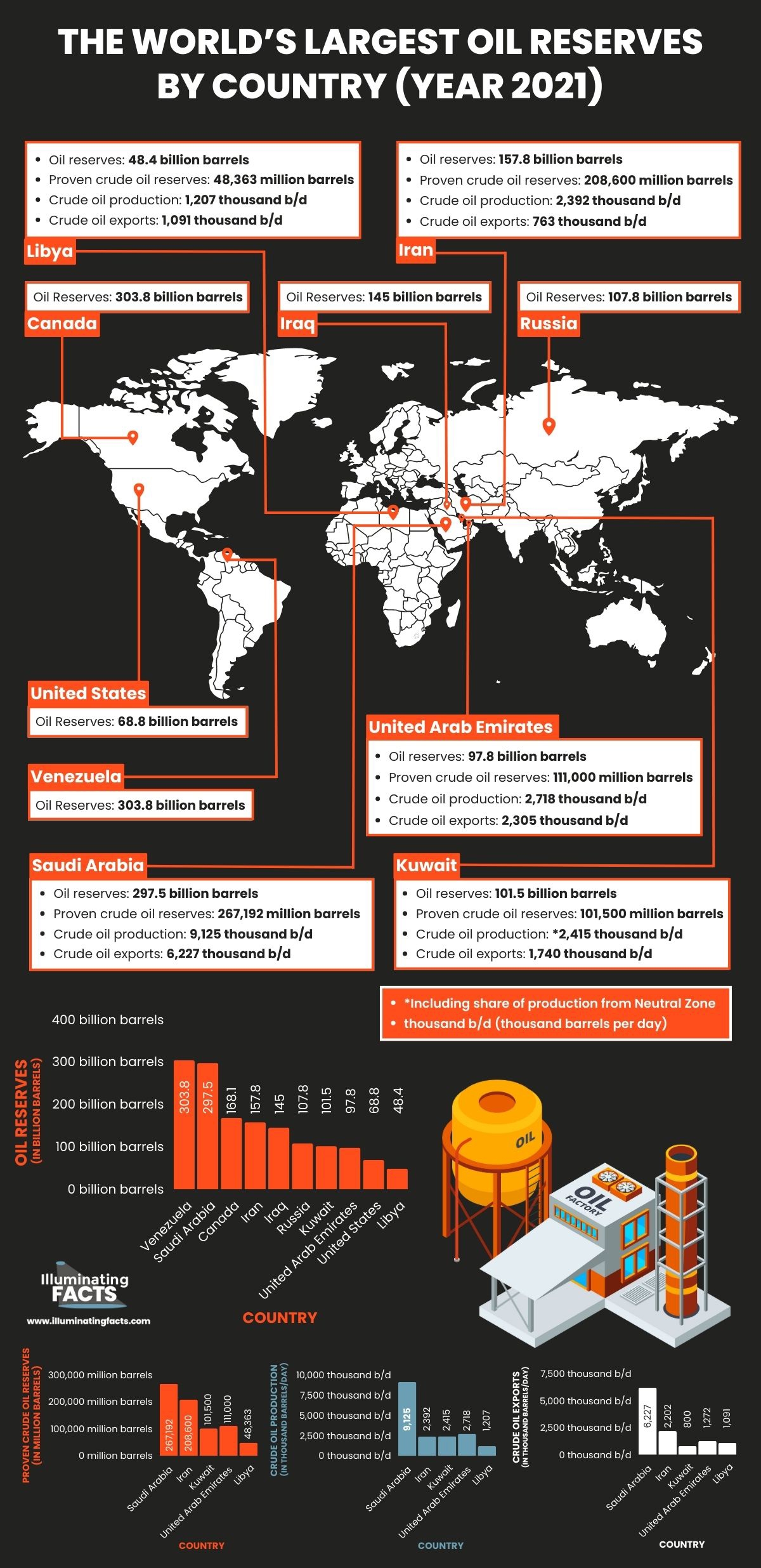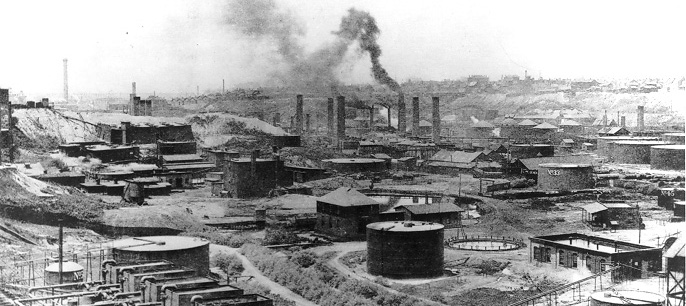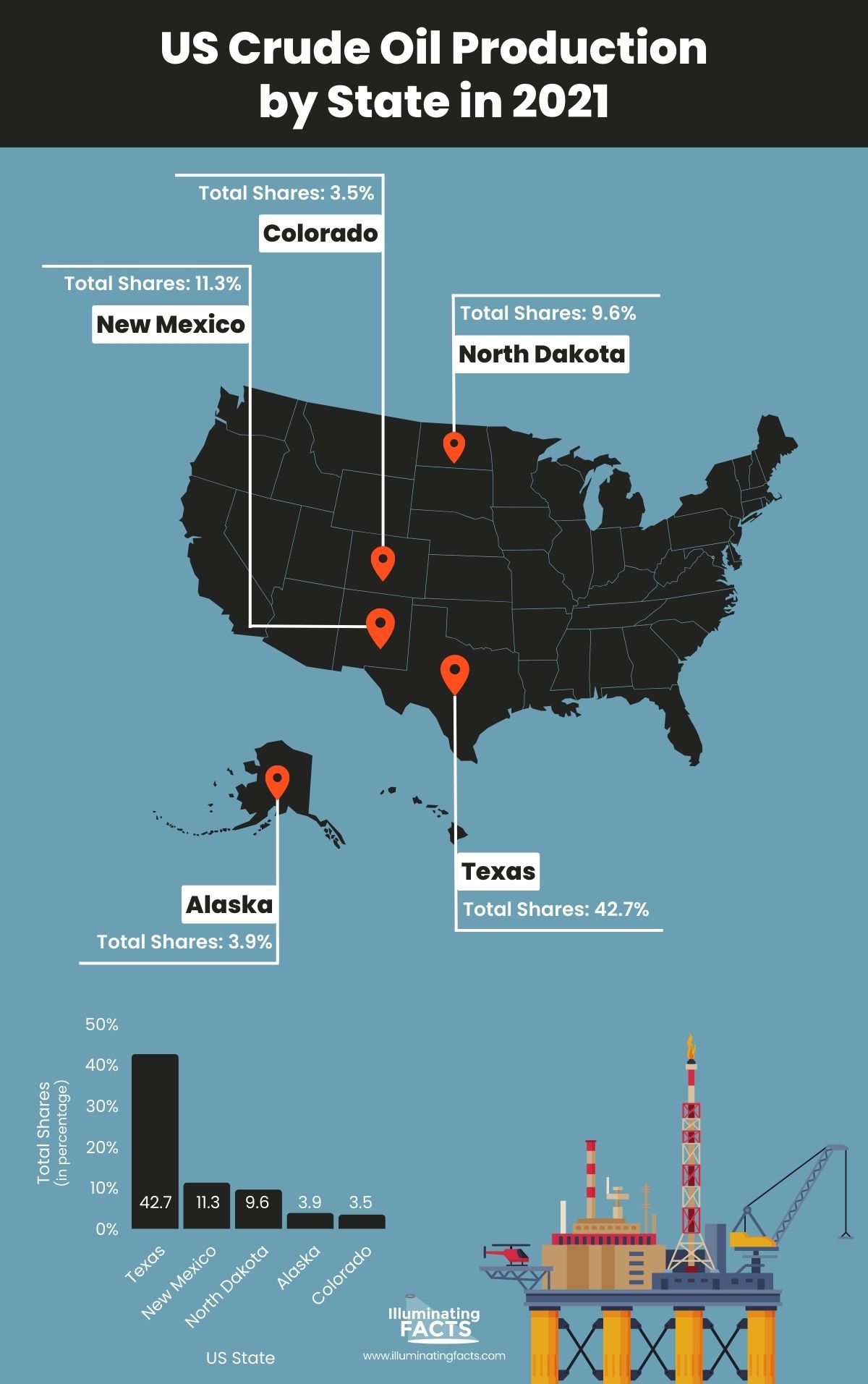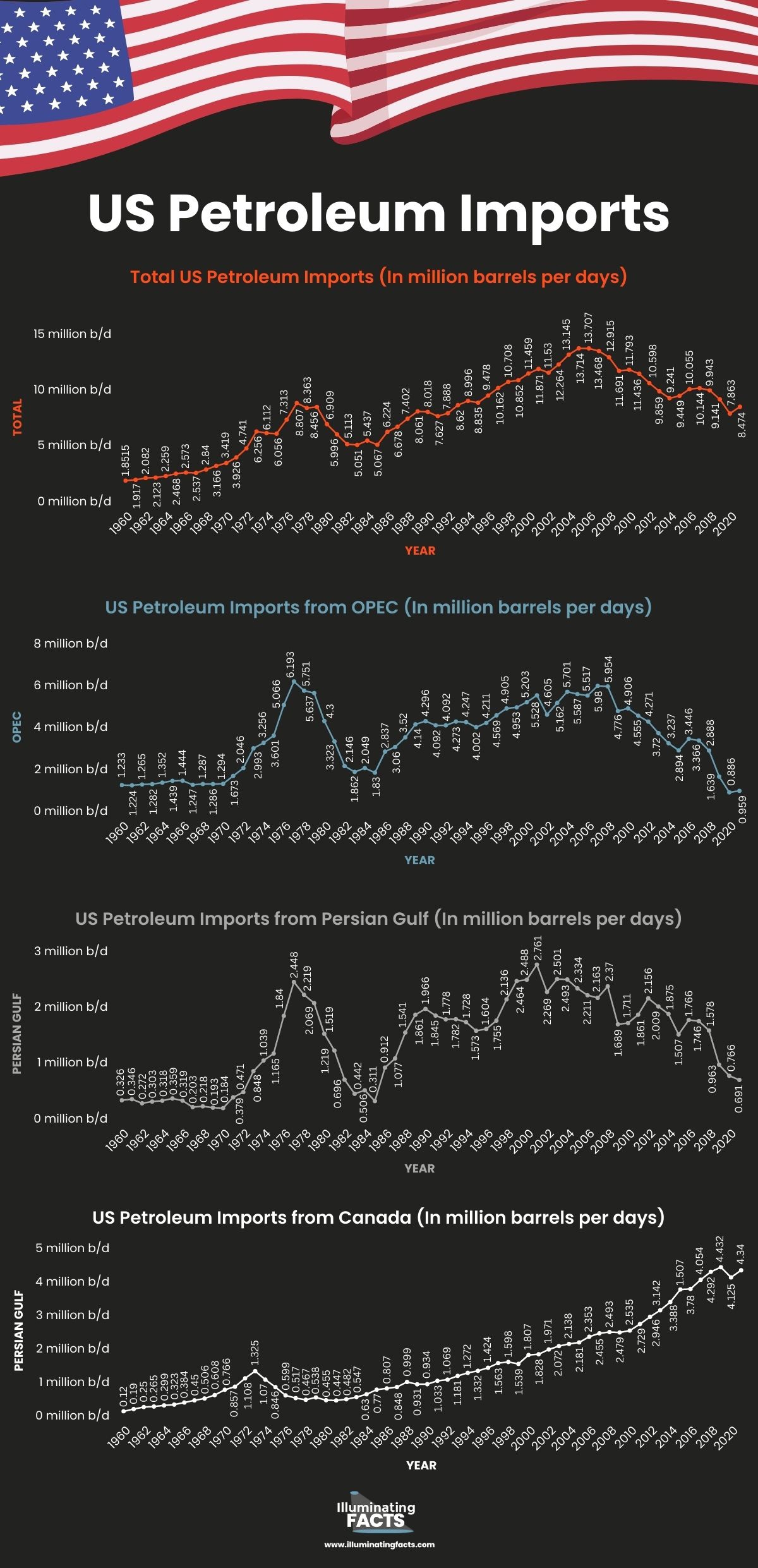Oil reserves are the estimated quantities of crude oil that are present in a certain economic area and have the potential to be economically extracted at the current price of oil.
Oil pools located in unreachable depths are not counted in a nation’s reserves since reserves are determined on a proven basis. [1]
The world’s oil reserves are not evenly distributed. Reserves could exist for a reservoir, a field, a country, or the entire world. The degree of certainty is related to various reserve classifications. Oil in place refers to the projected total amount of oil in a reservoir, which includes both producible and non-producible oil. [2]
The World’s Largest Oil Reserves by Country
Leader in the oil sector BP Plc calculates that there are 1.73 trillion barrels of oil reserves in the world in its 2021 report. [3]
According to a British business’s Statistical Review of World Energy study, Venezuela is in first place with 303.8 billion barrels in reserves. Saudi Arabia is second with 297.5 billion barrels, Canada comes third with 168.1 billion barrels, and Libya is tenth with 48.4 billion barrels. [3]
| Rank | Country | Oil Reserves (in billions of barrels) |
| 1 | Venezuela | 303.8 |
| 2 | Saudi Arabia | 297.5 |
| 3 | Canada | 168.1 |
| 4 | Iran | 157.8 |
| 5 | Iraq | 145 |
| 6 | Russia | 107.8 |
| 7 | Kuwait | 101.5 |
| 8 | United Arab Emirates | 97.8 |
| 9 | United States | 68.8 |
| 10 | Libya | 48.4 |
Source: BP, plc. https://www.bp.com/content/dam/bp/business-sites/en/global/corporate/pdfs/energy-economics/statistical-review/bp-stats-review-2021-oil.pdf
Venezuela Oil Reserves
The proven oil reserves in Venezuela, totaling 303.8 billion barrels in 2021, are recognized as the largest in the world.
Venezuela controls five major oil reserve formations-the Orinoco Oil Sand Belt, the Oficina Formation, the Barinas-Apure Basin, the Falcón Basin, and the Maracaibo Basin. The Maracaibo Basin draws the most attention since it continues to be the center of Venezuela’s oil production and because it was here that oil seeps were first discovered in the nation. [4]
Saudi Arabia Oil Reserves
The proven oil reserves in Saudi Arabia reportedly ranked the second largest in the world, estimated in 2021 to be 297.5 billion barrels.
| Proven crude oil reserves (million barrels) | 267,192 |
| Proven natural gas reserves (billion cu. m.) | 8,507 |
| Crude oil production “(1,000 b/d) | 9,125 |
| Marketed production of natural gas (million cu. m.) | 120,485 |
| Refinery capacity (1,000 b/cd) | 3,327 |
| Output of petroleum products (1,000 b/d) | 2,548 |
| Oil demand (1,000 b/d) | 2,966 |
| Crude oil exports (1,000 b/d) | 6,227 |
| Exports of petroleum products (1,000 b/d) | 1,344 |
| Natural gas exports (million cu. m.) |
| * including share of production from Neutral Zone |
| •b/d (barrels per day) |
| •cu. m. (cubic metres) |
| •b/cd (barrels per calendar day) |
Source: OPEC https://www.opec.org/opec_web/en/about_us/169.htm
Canada Oil Reserves
Canada’s oil reserves amounted to 168.1 billion barrels in 2021. Most of Canada’s oil production occurs in the oil sands primarily found in Alberta.
Canada’s oil sands have significantly contributed to the recent growth in liquid fuel supply. In 2021, non-OPEC petroleum liquids grew by 0.8 million barrels per day (b/d), 0.3 million b/d of which were from Canada (primarily from oil sands). [5]
The Alberta oil sands’ output of bitumen and upgraded synthetic crude oil has recently fuelled expansion in Canada’s liquid fuels production. More than 97% of Canada’s oil reserves are found in its oil sands, which continue to be the country’s principal source of hydrocarbon production. In 2021, Alberta accounted for approximately 80% of the nation’s total output.
These substantial deposits can be found in the Canadian provinces of Alberta and Saskatchewan: Athabasca, Peace River, and Cold Lake. These resources will account for the majority of Canada’s proven oil reserves and any future increases in the nation’s production of liquid fuels. [5]
Iran Oil Reserves
Iran, as of 2021, has the fourth largest oil reserves in the world.
According to deputy oil minister Khojasteh Mehr, the increased recovery rate places Iran’s recoverable crude reserves at 157 billion barrels. 33 trillion cubic meters are thought to be the size of natural gas reserves (116.5 trillion cubic feet). Thanks to its vast reserves, Iran can keep producing oil and gas for at least the next 100 years. [6]
| Value of petroleum exports (million $) | 25,313 |
| Current account balance (million $) | 15,004 |
| Proven crude oil reserves (million barrels) | 208,600 |
| Proven natural gas reserves (billion cu. m.) | 33,988 |
| Crude oil production (1,000 b/d) | 2,392 |
| Marketed production of natural gas (million cu. m.) | 257,119 |
| Refinery capacity (1,000 b/cd) | 2,202 |
| Output of petroleum products (1,000 bId) | 1,673 |
| Oil demand (1,000 b/d) | 1,777 |
| Crude oil exports (1,000 b/d) | 763 |
| Exports of petroleum products (1,000 b/d) | 333 |
| Natural gas exports (million cu.m.) | 18,425 |
| •b/d (barrels per day) |
| •cu. m. (cubic metres) |
| •b/cd (barrels per calendar day) |
Source: https://www.opec.org/opec_web/en/about_us/163.htm
Iraq Oil Reserves
Near Kirkuk, Mosul, and Khanaqin in the north of Iraq are thought to contain 17% of the country’s oil reserves.
The southern fields produce almost three-fourths of Iraq’s crude oil, with the remaining portion coming mostly from the northern fields in Kirkuk and East Baghdad center field.
Sixty percent of Iraq’s confirmed oil reserves are located in five super-giant oilfields in the south, each of which has at least 5 billion barrels in reserve. Phase I and II of West Qurna, North and South Rumaila, and Majnoon in the south are the locations of these oilfields. [7]
Russia Oil Reserves
Russia had 107.8 billion barrels of oil reserves in 2021, ranking 6th among the countries with the largest reserves globally.
Russian crude and condensate production in 2021 was 10.5 million barrels per day (bpd), or 14% of the global supply. Although Russia has infrastructure for producing oil and gas throughout the country, most of its fields are centered in western and eastern Siberia. [8]
A rough estimate of 4.7 million bpd of crude oil was exported by Russia in 2021. Russia supplies a substantial amount of crude to consumers in Europe, but China is the country that imports the most Russian crude (1.6 million bpd) (2.4 million bpd).
In 2019, at least 48 nations imported crude oil from Russia. Belarus, Cuba, Curacao, Kazakhstan, and Latvia are the nations that rely on Russian oil the most; each imports more than 99 percent of its crude oil from Russia. [9]
Kuwait Oil Reserves
| Value of exports (million $) | 72,386 |
| Value of petroleum exports (million $) | 56,545 |
| Current account balance (million $) | 32,574 |
| Proven crude oil reserves (million barrels) | 101,500 |
| Proven natural gas reserves (billion cu. m.) | 1,784 |
| Crude oil production * (1,000 b/d) | 2,415 |
| Marketed production of natural gas (million Cu.m.) | 12,728 |
| Refiners/capacity (1,000 b/cd) | 800 |
| Output of petroleum products (1,000 b/d) | 845 |
| Oil demand (1,000 b/d) | 482 |
| Crude oil exports (1,000 b/d) | 1,740 |
| Exports of petroleum products (1,000 bId) | 604 |
| Natural gas exports (million cu. m.) |
| * including share of production from Neutral Zone |
| •b/d (barrels per day) |
| •cu. m. (cubic metres) |
| •b/cd (barrels per calendar day) |
Source: https://www.opec.org/opec_web/en/about_us/165.htm
Kuwait’s oil production amounted to 2.74 million of barrels per day in 2021. Over 95% of Kuwait’s exports, nearly 50% of its GDP, and 90% of its export-related income come from oil. Approximately 7% of the world’s oil reserves are in Kuwait.
The Kuwait Petroleum Corporation (KPC), a state-owned company, oversees the nation’s oil industry. The “K companies” are a group of companies operating beneath KPC and collectively referred to as KPC. Kuwait Oil Company is largely responsible for upstream operations. [10]
Kuwait National Petroleum Company handles downstream operations. The Kuwait Oil Company (KOC) is the largest business in terms of income and is in charge of producing oil.
United Arab Emirates Oil Reserves
Abu Dhabi is home to over 96% of the nation’s estimated 100 billion barrels of known oil reserves. The UAE economy heavily depends on hydrocarbons, with 13% of exports and 30% of GDP coming directly from the oil and gas sector.
Oil and gas export revenues, which make up the vast majority of the UAE government’s income, are still a significant source of income for the country. [11]
| Value of petroleum exports (million $) | 54,595 |
| Current account balance (million $) | 47,978 |
| Proven crude oil reserves (million barrels) | 111,000 |
| Proven natural gas reserves (billion cu. m.) | 8,200 |
| Crude oil production (1,000 b/d) | 2,718 |
| Marketed production of natural gas (million cu. m.) | 54,485 |
| Refinery capacity (1,000 b/cd) | 1,272 |
| Oulput of petroleum products (1,000 bid) | 1,041 |
| Oil demand (1,000 bid) | 916 |
| Crude oil exports (1,000 b/d) | 2,305 |
| Exports of petroleum products (1,000 b/d) | 891 |
| Natural gas exports (million cu. m.) | 7,849 |
| •bid (barrels per day) |
| •cu. m. (cubic metres) |
| •bled (barrels per calendar day) |
Source: https://www.opec.org/opec_web/en/about_us/170.htm
United States Oil Reserves
In addition to the coastal waters of the United States, 32 states also produce crude oil. Five states accounted for over 71% of the nation’s total crude oil production in 2021.
In 2021, the top five states for crude oil production were as follows, in terms of the percentage of total U.S. crude oil production:
Source: https://www.eia.gov/energyexplained/oil-and-petroleum-products/where-our-oil-comes-from.php
About 15.2% of the crude oil produced in the United States in 2021 came from offshore wells in the Gulf of Mexico’s federally controlled waters.
Source: https://www.eia.gov/energyexplained/oil-and-petroleum-products/imports-and-exports.php
Since the 1990s, the United States has dramatically boosted its imports of petroleum from Canada, which currently accounts for the majority of the country’s overall imports of petroleum and crude oil.
51% of the gross total petroleum imports and 62% of the gross imports of crude oil into the United States were from Canada in 2021. [12]
Libya Oil Reserves
Libya’s oil reserves are among the ten largest in the world and the greatest in Africa.
| Value of petroleum exports (million $) | 27,485 |
| Current account balance (million $) | 5,177 |
| Proven crude oil reserves (million barrels) | 48,363 |
| Proven natural gas reserves (billion cu. m.) | 1,505 |
| Crude oil production (1,000 b/d) | 1,207 |
| Marketed production of natural gas (million cu. m.) | 24,244 |
| Refinery capacity (1,000 b/cd) | 634 |
| Output of petroleum products (1,000 b/d) | 126 |
| Oil demand (1,000 b/d) | 186 |
| Crude oil exports (1,000 b/d) | 1,091 |
| Exports of petroleum products (1,000 b/d) | 89 |
| Natural gas exports (million cu. m.) | 8,000 |
| •b/d (barrels per day) |
| •cu. m. (cubic metres) |
| •blcd (barrels per calendar day) |
Source: https://www.opec.org/opec_web/en/about_us/166.htm
Libya possessed 39% of Africa’s proven oil reserves and 3% of the world’s proven oil reserves as of 2021. Despite having large oil reserves, Libya has seen little investment in its oil and natural gas industries due to political unrest and militia attacks on infrastructure. [13]
Although the El Sharara and El Feel fields in the west are also significant producing zones, most of the country’s oilfields are situated in the Sirte Basin in the east. The area, which has the potential to contain new oil riches, is yet mostly unexplored.
Most Interesting Facts about Oil
Oil is used to make recreational sports equipment, cosmetics, and medicine. [14]
Throughout world history, oil and gas have been crucial. Crude oil was utilized in ancient cultures as glue to bond items and as a sealant to waterproof various surfaces. [14]
In 1973 an oil embargo was implemented by the OPEC nations, led by Saudi Arabia. Canada, Japan, the Netherlands, the United Kingdom, and the United States were included in the embargo because they had backed Israel during the Yom Kippur War. [15]
Petroleum is older than dinosaurs. Fossils of creatures and plants that existed before the dinosaur era were used to create the petroleum we use today. [16]
Oil is used to make bubble gum. Unbelievably, the foundation for bubblegum is formed of polymers derived from petroleum. The secret to gum’s peculiar characteristics is its petroleum foundation. [16]
In the past, Assyrian lawbreakers were poured in bitumen. Lawbreakers in ancient Assyria were subject to cruel punishment. Offenders would have bitumen, a dark, dense type of petroleum, poured over their heads. [16]
Strong oil and gas production in Australia is expected to enhance the economy by $350 billion and create more than 220,000 jobs over the next 20 years. [16]
Algeria, Angola, Congo, Equatorial Guinea, Gabon, Iran, Iraq, Kuwait, Libya, Nigeria, Saudi Arabia, United Arab Emirates, and Venezuela are the 13 nations/members of OPEC. [17]
References:
- Society of Petroleum Engineers. “Standards Pertaining to the Estimating and Auditing of Oil and Gas Reserves Information (Revised June 2019),” Page 16
- Society of Petroleum Engineers, Petroleum reserves and resources definitions: https://www.spe.org/en/industry/reserves/
- BP, plc. “bp Statistical Review of World Energy, 2021 | 70th Edition,” https://www.bp.com/content/dam/bp/business-sites/en/global/corporate/pdfs/energy-economics/statistical-review/bp-stats-review-2021-oil.pdf
- https://www.scienceabc.com/eyeopeners/why-does-venezuela-have-so-much-oil.html
- https://www.eia.gov/international/analysis/country/CAN
- https://www.hellenicshippingnews.com/irans-oil-and-gas-reserves-estimated-at-1-2-trillion-barrels-nioc-chief/
- https://www.mei.edu/publications/iraqs-oil-sector-open-business-asia-connection#:~:text=An%20estimated%2017%25%20of%20oil,and%20East%20Baghdad%20middle%20field.
- https://www.iea.org/articles/energy-fact-sheet-why-does-russian-oil-and-gas-matter
- https://www.aljazeera.com/news/2022/3/10/infographic-how-much-of-your-countrys-oil-comes-from-russia-interactive
- https://www.trade.gov/country-commercial-guides/kuwait-oil-and-gas
- https://www.trade.gov/country-commercial-guides/united-arab-emirates-oil-and-gas
- https://www.eia.gov/energyexplained/oil-and-petroleum-products/imports-and-exports.php
- https://www.eia.gov/international/analysis/country/LBY
- https://www.dosomething.org/us/facts/11-facts-about-oil
- https://www.investopedia.com/terms/o/oil-reserves.asp
- https://www.brunel.net/en-au/blog/oil-and-gas/fascinating-oil-and-gas-facts
- https://edition.cnn.com/2013/07/30/world/oil-and-gasoline-fast-facts/index.html

